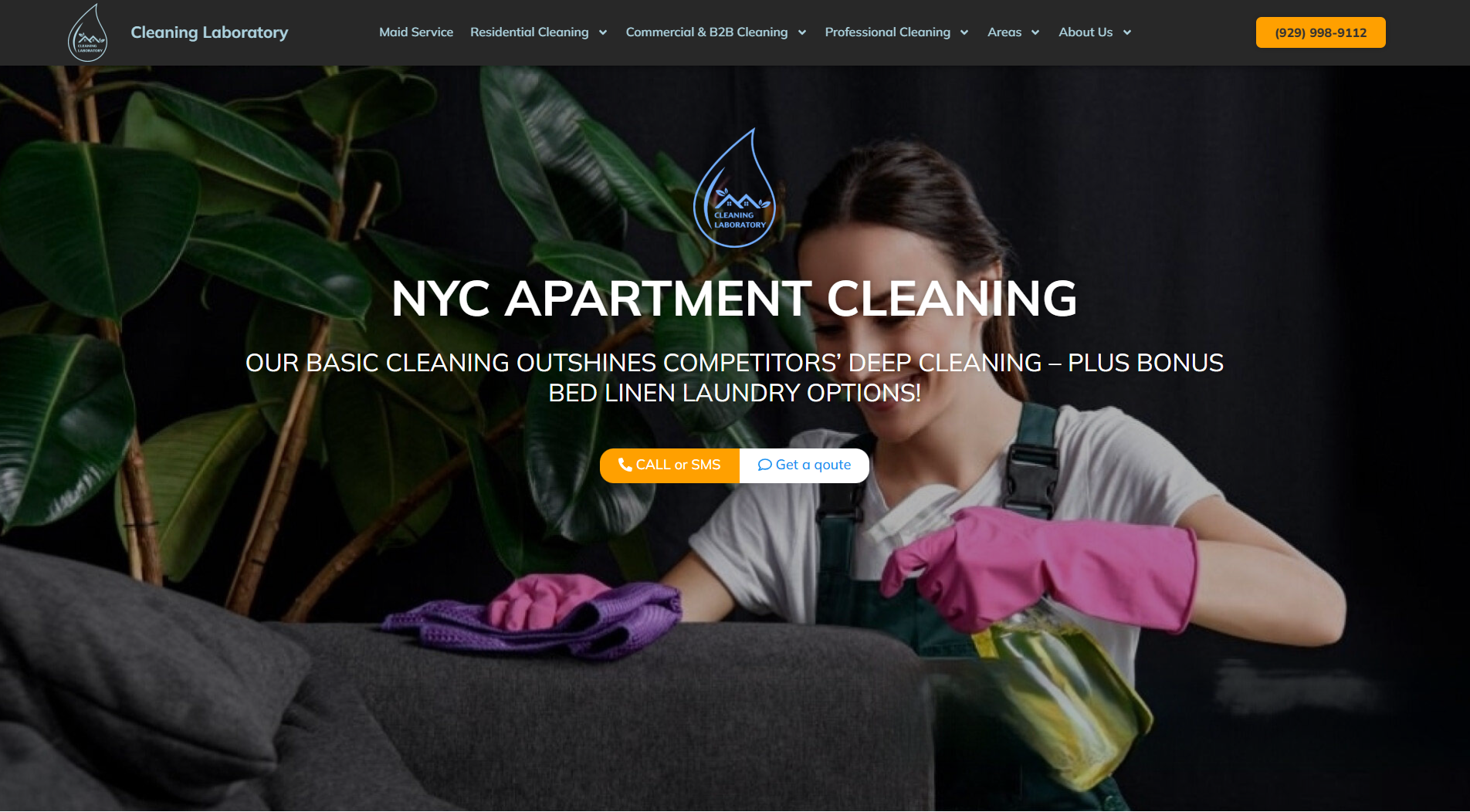
Your apartment isn't just where you sleep between work shifts. It's your refuge, your recharge station, your sanctuary from the chaos of the outside world. But if you're like most urban dwellers, your space probably feels more like a storage unit with a bed than the healthy haven you deserve.
Creating a fresh, healthy living environment in an apartment isn't about having unlimited square footage or a designer budget. It's about understanding how your environment affects your wellbeing and making smart choices within your constraints.
Research proves that our living spaces directly impact everything from sleep quality to immune function to mental health. The good news? Small changes create big improvements, especially when you know what actually matters.
The Urban Challenge of Apartment Living
City apartment living presents unique obstacles that suburban homeowners never face. Limited space forces everything closer together. Shared walls mean less control over noise and air quality. Urban pollution finds its way inside despite your best efforts.
Space limitations amplify every problem. That pile of laundry isn't just visual clutter - in a small space, it affects the entire room's energy. Cooking smells linger longer. Dust accumulates faster when there's less air circulation.
Urban pollutants are relentless. City air carries exhaust fumes, construction dust, and industrial particles that suburban homes rarely encounter. Your apartment's ventilation system works overtime just keeping up with basic air exchange.
The challenges are real, but they're not insurmountable. Many New Yorkers have discovered that professional NYC apartment cleaning services help maintain the deep cleanliness needed to combat urban living challenges, creating a foundation for healthier indoor environments.
Neighbor proximity affects your space. Shared ventilation systems can bring unwanted odors and allergens from other units. Noise pollution impacts sleep quality. Even well-maintained buildings struggle with these interconnected systems.
Limited natural light changes everything. Most apartments get significantly less natural light than houses, affecting mood, sleep cycles, and even vitamin D production. This creates a cascade of health impacts that many residents don't even realize.
Air Quality - Your Invisible Health Factor
You can't see air quality, but you feel its effects every day. Poor indoor air triggers headaches, fatigue, allergies, and concentration problems. The scary part? Indoor air is often 2-5 times more polluted than outdoor air, even in cities.
Common apartment air polluters include:
- Cooking fumes and grease particles
- Cleaning product residues
- Pet dander and dust mites
- Mold spores from humidity
- Off-gassing from furniture and carpets
- Particles from neighbors' units
Strategic ventilation makes the difference. Open windows during low-traffic hours when outdoor air quality is better. Use exhaust fans while cooking and showering. Create cross-ventilation by opening windows on opposite sides of your apartment when possible.
Plants aren't just decoration - they're air purifiers. NASA studies show that spider plants, snake plants, and peace lilies actively remove toxins from indoor air. They also add humidity in dry environments and oxygen 24/7.
Air purifiers target specific problems. HEPA filters remove particles and allergens. Activated carbon filters eliminate odors and chemical vapors. UV purifiers kill bacteria and viruses. Choose based on your specific air quality challenges.
Humidity control prevents multiple problems. Too dry, and you get respiratory irritation and static electricity. Too humid, and mold thrives. Ideal humidity stays between 30-50%. Dehumidifiers and humidifiers aren't luxury items - they're health tools.
Natural Light and Its Transformative Power
Light doesn't just help you see - it regulates hormones, affects mood, and influences your entire circadian rhythm. Apartment dwellers often underestimate how much their limited natural light impacts their health and energy levels.
Maximize existing natural light sources. Clean windows inside and out regularly - dirty glass blocks surprising amounts of light. Use light-colored or sheer curtains instead of heavy drapes. Position mirrors strategically to reflect light deeper into rooms.
Artificial lighting strategy matters. Harsh overhead fluorescents create eye strain and headaches. Layer different light sources: ambient lighting for general illumination, task lighting for specific activities, accent lighting for mood.
Color temperature affects your biology. Cool, bright light (5000K-6500K) boosts alertness during daytime. Warm light (2700K-3000K) signals your body to prepare for sleep. Smart bulbs that adjust throughout the day can improve sleep quality significantly.
Light therapy compensates for limitations. Full-spectrum light boxes help combat seasonal depression and regulate sleep cycles. Even 15-20 minutes of morning light therapy can improve energy levels and mood stability.
As Marie Kondo wisely notes, "The space in which we live should be for the person we are becoming now, not for the person we were in the past." This includes creating lighting that supports your current health and lifestyle goals.
Decluttering for Mental Clarity
Physical clutter creates mental clutter - this isn't just a feel-good saying, it's backed by neuroscience research. Cluttered environments increase cortisol levels and make it harder to focus, relax, and make decisions.
The apartment decluttering approach differs from house decluttering. You can't just move things to the garage or basement. Every item must earn its place through regular use or genuine joy. Storage solutions become crucial because everything visible affects the space's energy.
Start with the "one-year rule." If you haven't used something in a year and it's not seasonal or sentimental, it probably needs to go. Be honest about duplicates - do you really need five coffee mugs when you live alone?
Digital decluttering matters too. Visual chaos on your laptop desktop creates the same stress as physical clutter. Organize digital files, delete old photos, and clean up your phone's home screen. Your apartment's calm energy shouldn't be undermined by digital chaos.
Create designated homes for everything. In small spaces, items without designated spots become visual clutter quickly. Invest in attractive storage solutions that serve double duty as decor.
The 10-minute daily reset prevents accumulation. Set a timer and spend 10 minutes each evening returning items to their designated spots. This prevents the weekend clutter avalanche that ruins your sanctuary vibe.
Creating Zones That Actually Work
Studio and one-bedroom apartments challenge traditional room-by-room organization. Instead, think in functional zones that serve multiple purposes throughout the day.
Sleep zone optimization:
- Position bed away from main traffic flow
- Use blackout curtains or sleep masks for darkness
- Keep electronics out of the sleep area when possible
- Invest in air circulation near the bed
Work zone separation:
- Create visual boundaries even in shared spaces
- Use a dedicated work lamp to signal "office hours"
- Store work materials out of sight after hours
- Position workspace near natural light when possible
Relaxation zone creation:
- Designate a specific area for unwinding
- Use different lighting to signal transition from work mode
- Keep this area clutter-free and comfortable
- Add elements that promote calm (plants, soft textures, calming colors)
Cooking and eating zone efficiency:
- Maximize counter space through vertical storage
- Keep healthy snacks visible and accessible
- Create a designated eating area separate from work space
- Maintain excellent ventilation to prevent cooking odors from lingering
The Psychology of Color and Space
Color psychology isn't just interior design theory - different colors measurably affect heart rate, blood pressure, and brain activity. In small apartments, color choices become even more impactful because they're constantly in your peripheral vision.
Calming colors for better mental health:
- Soft blues reduce anxiety and promote relaxation
- Green tones connect you with nature and reduce eye strain
- Warm neutrals create feelings of safety and comfort
- Lavender promotes better sleep quality
Energizing colors for productivity:
- Yellow stimulates creativity and optimism
- Orange encourages enthusiasm and social interaction
- Red increases alertness (use sparingly as accent color)
- Bright white reflects light and creates feeling of spaciousness
Color temperature consistency matters. Mixing warm and cool tones randomly creates visual chaos. Choose a primary temperature (warm or cool) and use the opposite sparingly as accents.
Paint is the cheapest transformation tool. Rental restrictions? Removable wallpaper and wall decals offer similar benefits. Even changing lampshade colors can shift a room's entire energy.
Texture adds depth without color. Woven baskets, soft throw pillows, and natural wood elements create visual interest and warmth without overwhelming small spaces.
Peter Walsh, organizing expert, reminds us: "The stuff you own has to help you create the life you want. And if it doesn't, why is it in your home?" This applies to color choices too - every visual element should contribute to the healthy, peaceful environment you're creating.
Your apartment has the potential to be your personal wellness retreat. It doesn't require expensive renovations or massive square footage. It requires intentional choices about air quality, light, organization, and the psychological impact of your surroundings.
Start with one area that bothers you most. Maybe it's the cluttered kitchen counter that stresses you every morning, or the bedroom that never feels restful. Make one significant improvement, then build from there.
Remember: your living space is working on your subconscious 24/7. Make sure it's working in your favor, supporting your health, productivity, and peace of mind. Small apartments can absolutely be healthy, fresh sanctuaries - they just require more strategic thinking than larger spaces.
The investment you make in creating a healthy living environment pays dividends in better sleep, improved focus, reduced stress, and overall life satisfaction. Your apartment isn't just where you live - it's the foundation for everything else in your life.

















Leave a Reply